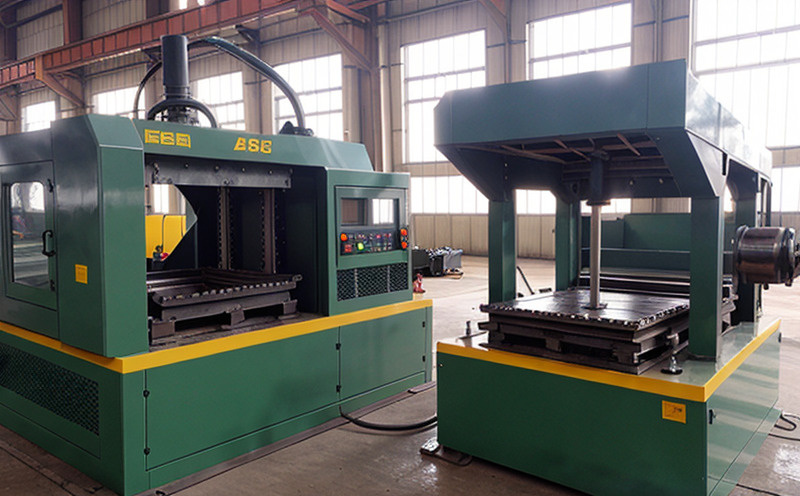ASTM B557 Tensile Testing of Forged Aluminum Alloys
The ASTM B557 standard specifies a method for determining the tensile properties of wrought aluminum and aluminum alloys in the as-forged condition. This testing procedure is critical for ensuring the mechanical integrity and quality assurance of materials used in industrial manufacturing processes, particularly within sectors such as aerospace, automotive, and defense.
The ASTM B557 test involves subjecting a sample to uniaxial tensile loading until it fractures. The primary parameters measured include yield strength, ultimate tensile strength (UTS), elongation after fracture, and reduction in area. These properties are essential for understanding the material's behavior under stress, which is crucial for designing components that can withstand operational loads without failure.
The forging process involves subjecting metal to high-pressure forces to shape it into a desired form. This process significantly affects the microstructure of the metal, influencing its mechanical and physical properties. ASTM B557 tensile testing helps in evaluating the effectiveness of this process by providing insight into how well the material has been forged.
The specimen for ASTM B557 testing is typically cut from a forging using standard practices. It must be free from defects that could influence test results, such as porosity or internal cracks. The specimen should also meet geometric requirements specified in the ASTM B557 standard to ensure accurate and repeatable results.
The testing process itself involves several key steps. First, the sample is mounted in a tensile testing machine equipped with appropriate grips for holding the sample securely during loading. Then, the machine applies load to the specimen at a controlled rate until fracture occurs. Throughout this process, data is collected on stress-strain behavior and the location of the fracture.
The results from ASTM B557 tensile testing are reported according to the standard's requirements. These reports typically include detailed descriptions of the test setup, specimens used, and the conditions under which the tests were conducted. They also provide a comprehensive analysis of the mechanical properties measured, along with any deviations from expected values.
Understanding these results is vital for quality control in industrial manufacturing processes. For example, if the yield strength or UTS falls below specified limits, it may indicate issues with the forging process that need addressing to maintain product quality and safety standards.
Applied Standards
| Standard | Description |
|---|---|
| ASTM B557-18 | Specification for Tensile Testing of Forged Aluminum Alloys. |
| ISO 6892:2019 | General Requirements for the Mechanical Testing of Metallic Materials. |
| EN 14735-2:2018 | Forgings — Part 2: Tensile testing. |
| IEC 60489-1:2019 | Test Methods for Metallic Materials — Part 1: General Test Methods. |
Benefits
Tensile testing according to ASTM B557 provides numerous benefits, especially in the context of industrial manufacturing and processing. By adhering to this standard, manufacturers can ensure that their forgings meet stringent quality requirements, thereby enhancing product reliability and safety.
- Quality Assurance: Ensures consistent material properties across all batches by providing standardized testing methods.
- Compliance: Facilitates compliance with industry regulations and standards, reducing the risk of non-conformance issues.
- Process Optimization: Helps identify areas where improvements can be made in the forging process to enhance material quality.
- Cost Efficiency: By identifying defects early in the manufacturing process, companies can minimize waste and reduce production costs.
- Certification: Provides a means for obtaining third-party certification, which is often required by customers or regulatory bodies.
In summary, ASTM B557 tensile testing supports robust quality assurance practices that are crucial for maintaining high standards in industrial manufacturing and processing sectors.
Quality and Reliability Assurance
- Data Accuracy: Ensures precise measurement of mechanical properties through calibrated equipment and trained operators.
- Consistency: Maintains uniform testing protocols across different batches to ensure consistent results.
- Traceability: Provides a documented record of each test that can be traced back to specific materials, processes, and personnel involved.
- Validation: Verifies the accuracy of test data through periodic calibration checks and retesting of samples using different operators or equipment.
These practices help in maintaining high levels of quality and reliability, which are essential for meeting customer expectations and regulatory requirements.





